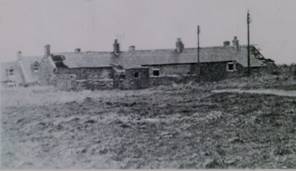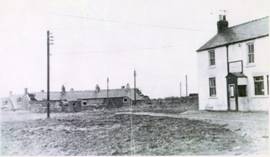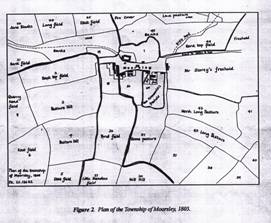
return to homepage
Hetton Local History Group - Boundary Heritage Walk Part 2
Point K information 
(GR
338 459 ) Directions to point L Proceed down the hill past the building on the right which once was the village school. Below this is a group of renovated farm buildings and then the remains of a quarry. Continue round the left hand bend and down the steeper part of the bank to the very bottom where the road swings round to the right. Locate the footpath on the other side of the road(left hand side), adjacent to Community Hut. Carefully cross the road and from this point you are on the homeward stretch. ( Point L) GR 343 466 QR code or link to information. Heritage Information Point K The trees on the right have been planted within the last 50 years. Originally this location was where there were a number of streets of miners’cottages. They were named as First Row, Second Row and Third Row. On the other side (uphill side) of the track were Westgarth’s Row and Wade’s Row, altogether about 50-60 properties. The cottages were typical miner’s accommodation with two rooms on the ground floor and an attic space which served as a bedroom area. There was no running water to most of the properties but there were stand pipes at the end of each street. In winter time these pipes often froze and inhabitants had to get good clean water from a spring down the hill from the present Valley View. Near to this group of houses were two pubs, The Crown Inn and the Lamb Inn. The latter pub building is now a private house and is the white house a little uphill from the track and set back off the road. The limestone cottages were demolished during the 1960s and early 1970s and trees planted in their place.
|
-- info@hettonlocalhistory.org.uk --



